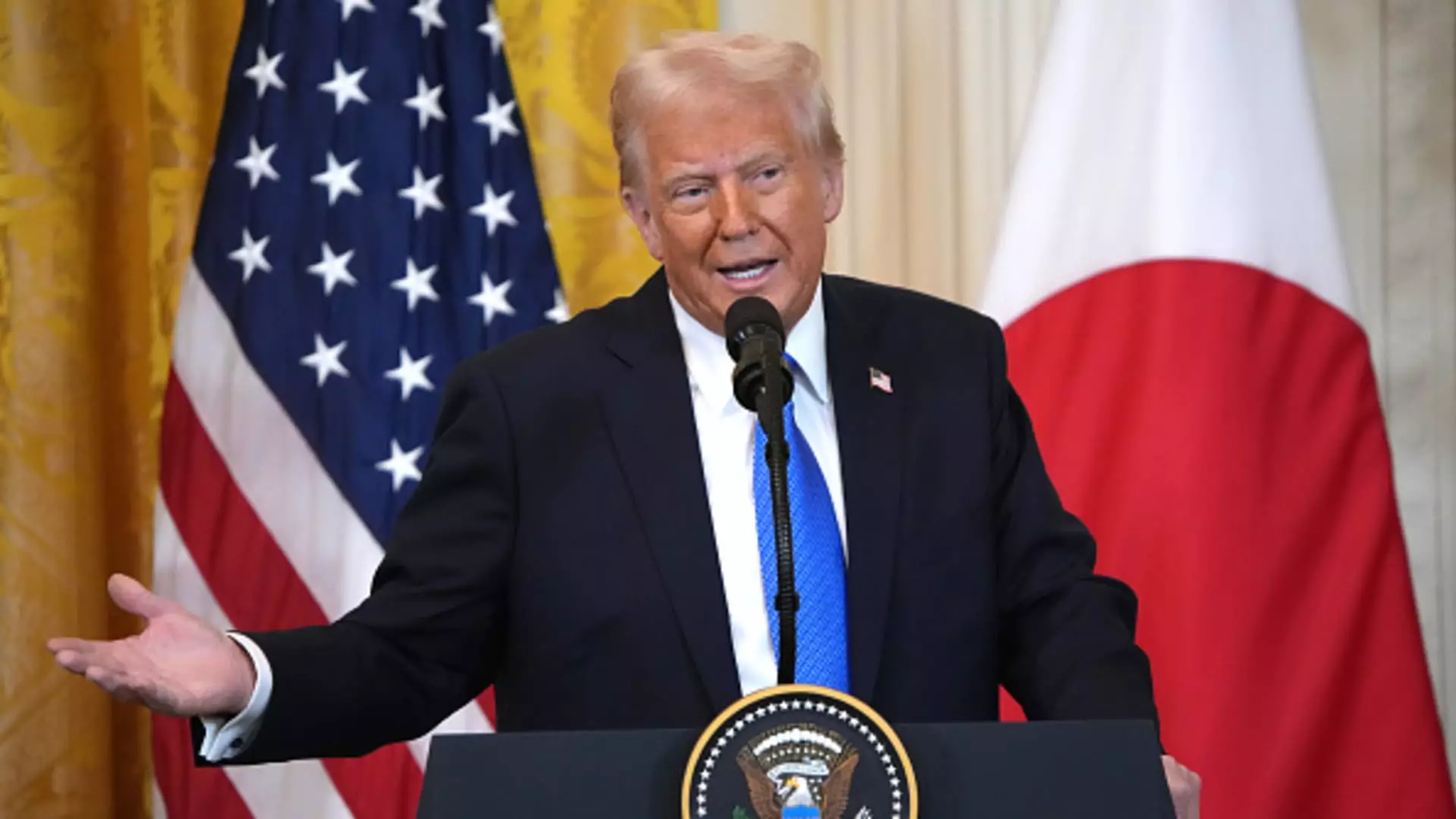The recent announcement of a “massive” trade agreement between the United States and Japan might sound like a historic breakthrough, but beneath the surface, it reveals more about political optics than genuine economic progress. President Donald Trump’s portrayal of the deal as “perhaps the largest ever made” is a masterclass in rhetoric designed to rally nationalist sentiments and project strength, but it obscures the complex realities that underpin international trade negotiations. The significant focus on reciprocal tariffs, especially auto duty reductions from 25% to 15%, seems impressive at first glance, but it raises fundamental questions about whether such concessions truly serve American workers or merely shift political capital within a geopolitically sensitive landscape.
This deal’s emphasis on Japan investing $550 billion and claiming that “America will receive 90% of the profits” heavily leans into grandiose storytelling. Who benefits most from such grand promises? Not necessarily the everyday American worker or consumer. Instead, these narratives tend to prioritize diplomatic posturing, glossing over tangible benefits and downplaying potential collateral damage—like the impact on smaller industries, agricultural sectors, and regional economies. While the White House touts job creation as a core victory, recent data shows a decline in auto exports, a sector critical to Japan’s economy, which might suggest the deal is more about managing political optics than fixing economic fundamentals.
Economic Realities versus Political Rhetoric
The reality is that Japan’s auto exports to the U.S. decline of over 26% in June signals an underlying vulnerability in the assumed benefits of the new tariffs. The drop compoundingly exposes the fragility of relying on tariff adjustments as a tool for economic growth. The move from 25% to 15% tariffs might be presented as a victory, but it simply inverts the previous stance of aggressive tariffs that threatened to escalate trade wars rather than foster cooperation. It’s a tactical retreat that serves political narratives rather than market stability.
Furthermore, the overall trade figures between Japan and the U.S. reflect a nuanced truth: the bilateral relationship remains complex, with a slight decline in exports overall, suggesting that economic gains for the U.S. are not as widespread or assured as some officials claim. The promise of significant Japanese investment, while attractive rhetorically, remains unverified in practical terms, especially when geopolitical concerns, internal Japanese politics, and international economic shifts are factored in. This gamble on political image rather than sustainable economic growth undermines the integrity of policymaking.
The Political Stakes and Leadership Showdowns
The timing of this agreement is hardly coincidental. In Japan, the ruling coalition has recently suffered electoral setbacks, sparking speculation about Shigeru Ishiba’s political future. The deal’s conclusion could be an attempt to shore up his leadership credentials, presenting him as a dealmaker capable of safeguarding national interests amid political turmoil. Such leverage underscores the fact that negotiations like these are as much about internal politics as they are about economics.
Within the broader American context, Trump’s claims about “receiving 90% of the profits” and “creating hundreds of thousands of jobs” serve a strategic purpose: bolstering his legacy and demonstrating patriotic resolve. But these lofty figures often ignore the complexities of labor markets and long-term economic sustainability. What remains unaddressed is whether these deals promote a fair, balanced economy—one that prioritizes the needs of American workers and industries over diplomatic theatrics.
In truth, the entire spectacle reflects a broader trend in global trade: the tendency for governments to negotiate with one hand while sidelining vulnerable communities and sectors that rely on fair trade policies. The real challenge lies in shifting focus from superficial deals and headline-grabbing narratives toward policies rooted in fairness, sustainability, and genuine mutual benefit. Until then, agreements like this risk becoming empty symbols, ultimately benefiting political interests more than the people they are purportedly designed to serve.


Leave a Reply